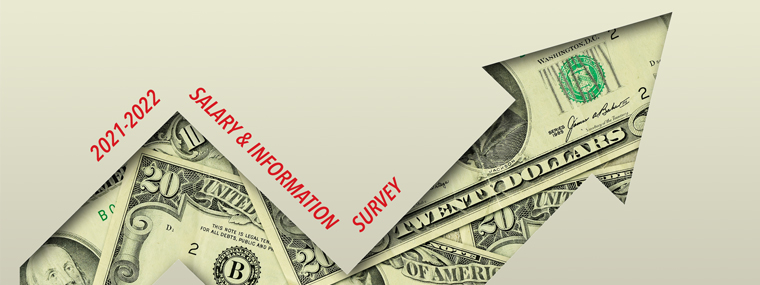
FLCAJ 2021–2022 Salary and Information Survey
Published January 2022
Florida Community Association Journal is privileged for the 33rd year to present the annual Salary and Information Survey. The Survey is compiled using data from an online survey that is available year-round. As always, the Survey depends on participation from our readers, managers, and board members alike, and we want to thank all who responded by the web survey. We trust this information will be helpful in evaluating salary and benefits in your community in 2022.
The Survey is displayed in three pie charts, eight bar charts, a community profile, and a manager’s compensation profile that should make the information easier to see at a glance. The first pie chart breaks down responses by region; the second pie chart provides a general manager profile; and the third pie chart breaks down the type of association survey respondents live in and provides the first bar chart with typical manager profile information. The manager compensation bar chart contains the average manager’s salary and benefits. The five total income bar charts compare salary ranges with several key indicators: region, number of units, price of units, total annual budget, and length of employment. The final bar chart lists average hourly wages for other typical community association employees.
General Summary
In 2021, the largest percentage of responses to the Salary Survey came from Southwest Florida at 38 percent. This was followed by Southeast Florida at 28 percent and Central Florida coming in at 16 percent.
Survey participants who live in condominiums represent more than two-thirds of the responses, with 90 percent using paid management. This year’s survey respondents used on-site management 61 percent of the time and management companies 29 percent of the time. Ten percent of the communities were self-managed.
Community Profile
The survey participants responded to several questions about their community association. The typical community surveyed in 2021 is an average of 35 years old and consists of 343 units. The average price for a unit came in at $506,250 with the average budget at $1,631,306. The average board of directors consists of seven volunteers. The amount of the last assessment for the communities ranged from $500–$5,000,000. The more expensive projects were parking garage restoration ($5,000,000), elevator and fire alarm replacement ($2,000,000) concrete restoration ($1,200,000), and sewer stacks (1,200,000). More than 50 percent of the communities surveyed reported that they had fully funded reserves.
Manager Profile and Compensation
The manager profile shows the average age of the manager is 55. The ratio of managers by gender is 40 percent female to 60 percent male. The average number of years of total management experience is 15, with the average manager having been at their current position for six years and devoting at least 45 hours per week to the job.
The most important statistic for managers deals with compensation. Manager salaries averaged $69,579 statewide for 2021, with bonuses averaging $4,480. This was great to see in another challenging year. Health insurance is being provided to 55 percent of respondents, and an IRA/401k is available to 40 percent. The average amount of vacation days came in at 19 with nine sick/personal days being made available.
Employees’ Average Hourly Wages
The average number of employees per community association came in at nine, which was a good rebound from 2020 when five employees per community was the average. Security chiefs, grounds supervisors, housekeeping supervisors, and rental managers saw increases in their hourly wages as compared with 2020.
FLCAJ hopes that you find this information useful and helpful as we move into 2022. We encourage you to take part in the 2022–2023 Salary and Information Survey by taking some time to visit www.fcapgroup.com/survey and fill out the survey as completely as you are able.






